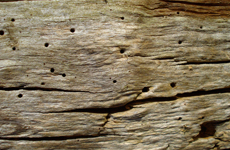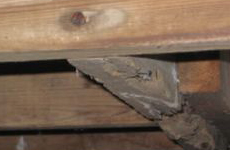

Wood treatment or repair for Woodworm,Dry rot,Wet rot and Rising damp
Buchan joinery are expert at treating or repairing wooden structures effected by decay, rot or infection. Providing a range of treatment services and a free consultation to give you piece of mind.
Woodworm
Buchan Joinery are specialists at woodworm treatment. Woodworm holes can be found in timber and are caused by the larvae of beetles that feed on the timber. Larger holes on the surface of the timber are formed when the adult beetle emerges from the timber to mate.
There are a number of species of woodworm, and the precise method of treatment will depend on which species is attacking the timber.
Dry rot
Dry rot( Serpula Lacrymans ) is the decay of timber in buildings and other wooden structures caused by fugi without the presence of water. Dry rot is a wood destroying fungus and is common in unprotected buildings. It is important to tell the diffrence between Dry rot and Wet rot. Henderson Joinery are expert at identifying the different funguses and recommend the best method of treatment or repair. Dry rot can shrink wood and is recognised by the darkening of the timber and crackes form in a 'cuboidal' manner. Dry rot can effect your whole home and may need a number of different treatment.Wet rot
Wet rot is a name for the damage caused by fungi, the most common of which are Conio-phora cerebella and Fibroporia vail-lanti. Wet rot is the most common form of rot in property and is commonly found around window sill and door frames. Window sill can crack, allowing water to penetrate and wet rot spores to enter the timber and your property. Timber swels and crakes with water penetration and is a common sign of wet rot. wet rot funguses requires more moister than Dry wrote funguses to spread and cause damage.Exterior joinery, where the paint or varnish has cracked and water has been allowed to make prolonged contact with the timber is a typical starting point for wet rot. Once water is behind any paint work it doesn't dry out or evaporate, so the wood swells, joints open and wet rot spores enter the cracks.
Buchan Joinery detects the first signs of wet rot by inspect any cracked paint on window sills or door frames. Commonly a soft, dark mass of rotted wood dust can be concealed beneath any paint work or veneer. The fungal strands of wet rot fungus are thinner than those of dry rot and are dark brown in colour. When growing over wood, these strands often develop a fern-like shape.









